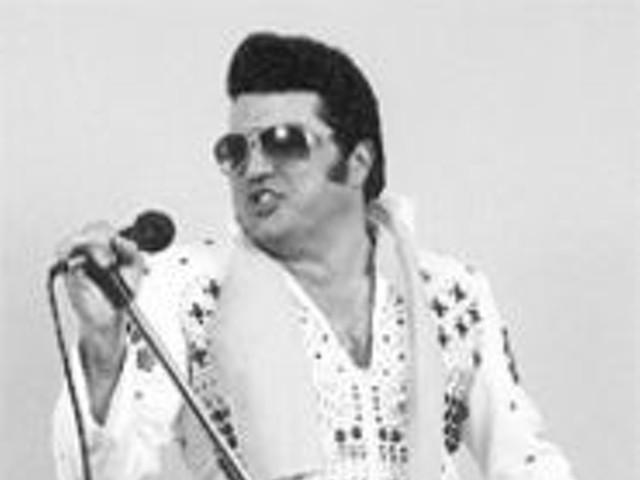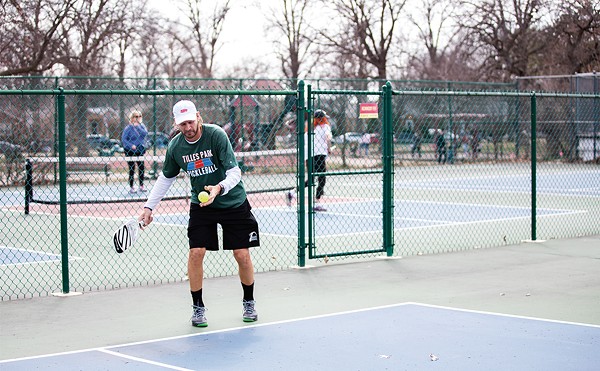Performed on the same set as their current production (Footloose), Free to Be... personalizes the space by adding colorful blocks, an oversize treasure chest and cutouts of frolicking children. Scenic designer Bryan Schulte also creates some clever set pieces -- bassinets that allow the heads of the adult actors to appear atop infant bodies, and jungle trees that contain tiger popouts. Costume designer John Inchiostro dresses each of the four performers in a shirt the shade of sherbet: Janine Burmeister in lime, Steve Isom in orange, Landon Shaw in raspberry and Kymberlee Thompson in lemon. White Keds complete the comfy look and allow the actors to perform their energetic dances with ease. Choreographer Ellen Isom perfectly captures the essence of the early '70s in "Brothers and Sisters," which incorporates tambourines with flowing ribbons and a blast-from-the-past robotic movement section.
Isom makes the transition into the show seem effortless, leading the audience in a volume exercise that moves smoothly into his rendition of the title song. This would be a good first theater experience for a child, in that each of the scenes offers a simple lesson through an entertaining story or song -- kind of like Sesame Street without the puppets. While timeless themes of freedom and hope pervade the show, the fight against gender stereotypes seems somewhat dated (thankfully). It would be interesting to know if kids today are puzzled by songs that teach us that mommies and daddies can do all kinds of different jobs.
Each of the actors would get good marks in the "plays well with others" category. Shaw demonstrates that boys can be athletic and like dolls, while Isom assures us "It's All Right to Cry." Thompson is a prim and proper Miss (who's eaten by tigers), while Burmeister performs both a wise grandmother and a feisty princess. The finale moves gracefully from curtain call to a question-and-answer session with the audience. It's a pleasant 50 minutes in a cool auditorium on a summer morning, a peppy show that won't make anybody think too hard.
In fact, the only real question raised by this production is why director Michael Hamilton casts four white actors. Thomas's original TV lineup included Harry Belafonte, ex-football great Rosie Grier (singing "It's All Right to Cry"), Diana Ross and Diana Sands. It seems clear that Thomas intended Free to Be... to showcase racial equality, but the Stages production looks as if diversity means casting blondes and brunettes.
This isn't a criticism of the individual actors; it's a question for Stages' artistic staff. Maybe they can follow the lead of their new Performing Arts Academy, which piloted a unique program this summer for children with physical, cognitive and developmental delays. As Stages adopts the role of training future performing artists and cultivating audiences of tomorrow, the company ought to find ways to incorporate a larger worldview into their performances. White bread is fine, but not for every meal.





